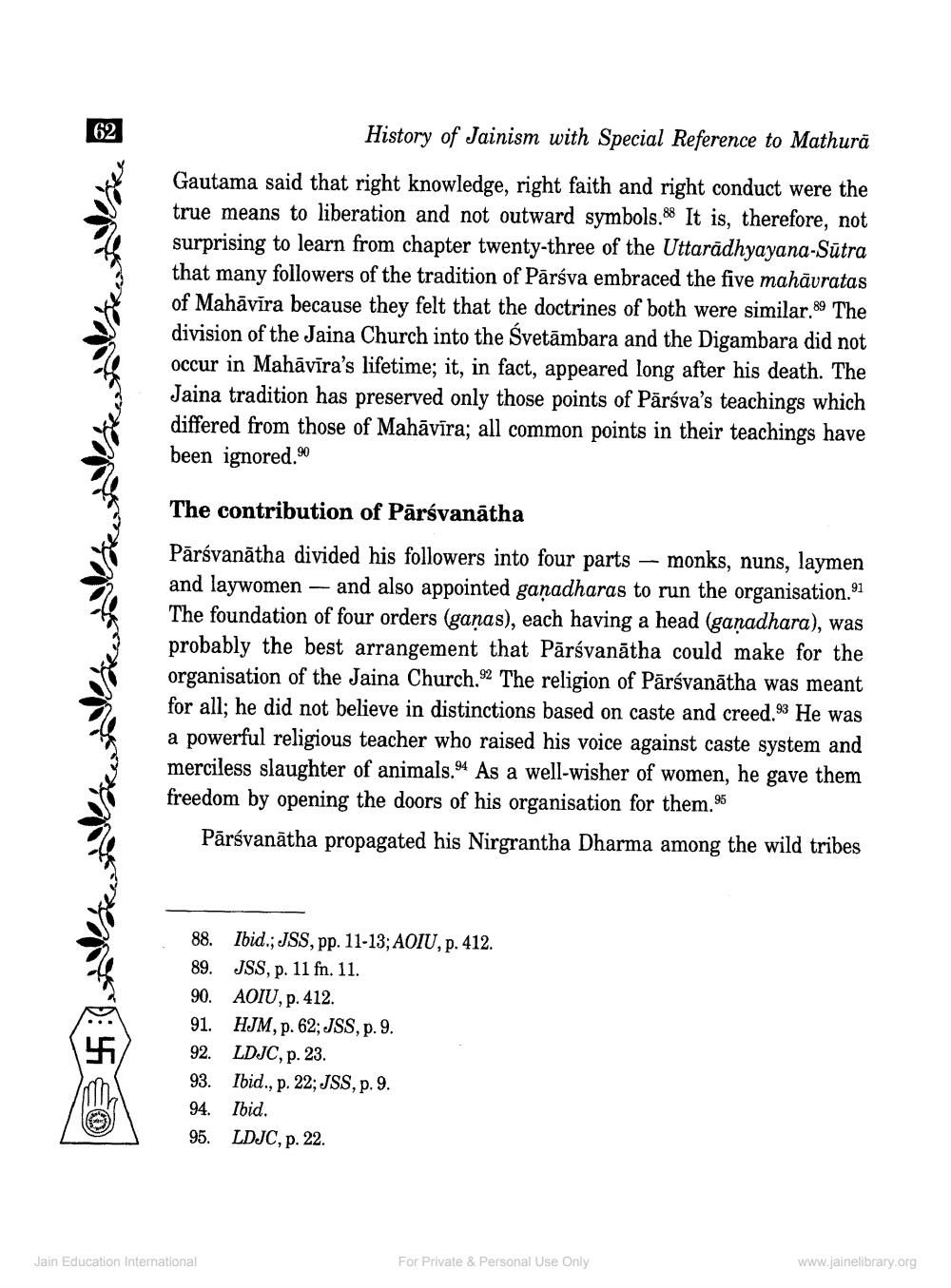________________
62
History of Jainism with Special Reference to Mathura
Gautama said that right knowledge, right faith and right conduct were the true means to liberation and not outward symbols.88 It is, therefore, not surprising to learn from chapter twenty-three of the Uttarādhyayana-Sutra that many followers of the tradition of Pārsva embraced the five mahāvratas of Mahāvira because they felt that the doctrines of both were similar.89 The division of the Jaina Church into the Svetāmbara and the Digambara did not occur in Mahāvira's lifetime; it, in fact, appeared long after his death. The Jaina tradition has preserved only those points of Pārsva's teachings which differed from those of Mahāvīra; all common points in their teachings have been ignored.90
The contribution of Pārsvanatha
Pārsvanātha divided his followers into four parts — monks, nuns, laymen and laywomen - and also appointed ganadharas to run the organisation.91 The foundation of four orders (ganas), each having a head (ganadhara), was probably the best arrangement that Pārsvanātha could make for the organisation of the Jaina Church.92 The religion of Pārsvanātha was meant for all; he did not believe in distinctions based on caste and creed.93 He was a powerful religious teacher who raised his voice against caste system and merciless slaughter of animals.94 As a well-wisher of women, he gave them freedom by opening the doors of his organisation for them.95
Pārsvanātha propagated his Nirgrantha Dharma among the wild tribes
88. Ibid.; JSS, pp. 11-13; AOIU, p. 412. 89. JSS, p. 11 fn. 11. 90. AOIU, p. 412. 91. HJM, p. 62; JSS, p. 9. 92. LDJC, p. 23. 93. Ibid., p. 22; JSS, p. 9. 94. Ibid. 95. LDJC, p. 22.
Jain Education International
For Private & Personal Use Only
www.jainelibrary.org




